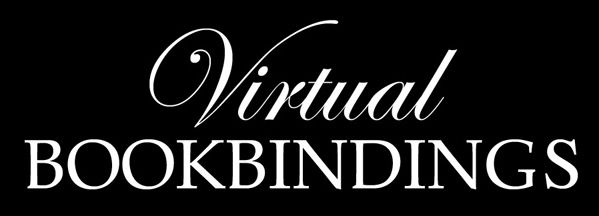

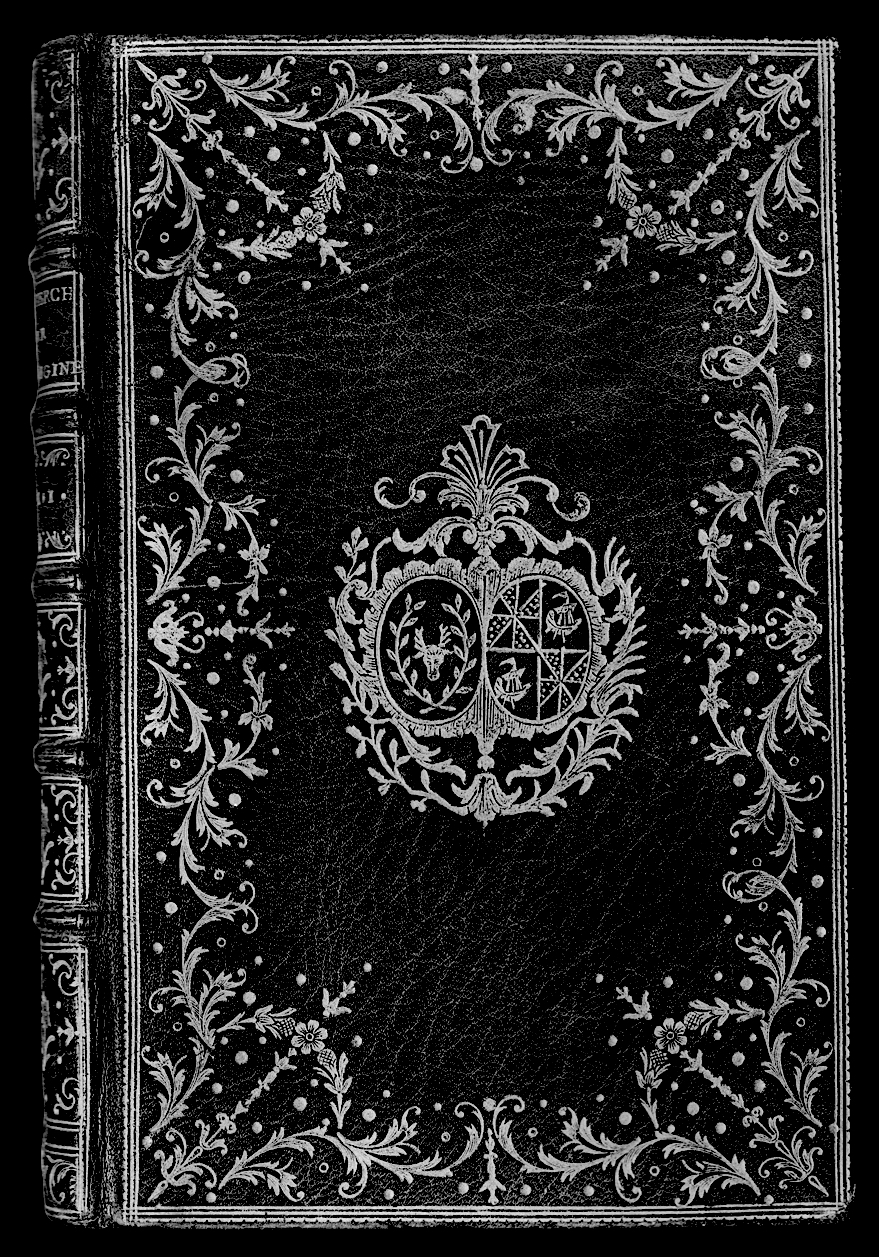

| The reproduction of the binding shown above is found in the QUATRIÈME PARTIE of a publication entitled La bibliothèque de feu Édouard Rahir, ancien libraire Paris : Francisque Lefrançois, libraire-expert, 1930-1938. An indispensible catalogue for a serious researcher. We are lucky to have this binding to compare with the one we looked at on the first page of this series, firstly because this reproduction is excellent allowing us to see the detail of the imprints, and second due to the fortunate fact that many of the same imprints are found on both bindings. We do not know when these bindings were made, however we might guess that they were created within a few years of each other and that they both could have been made a few years after 1766 i.e. in the Douceur retirement period. Perhaps Douceur made them both we do not know, however certain imprints may help us to find out. |
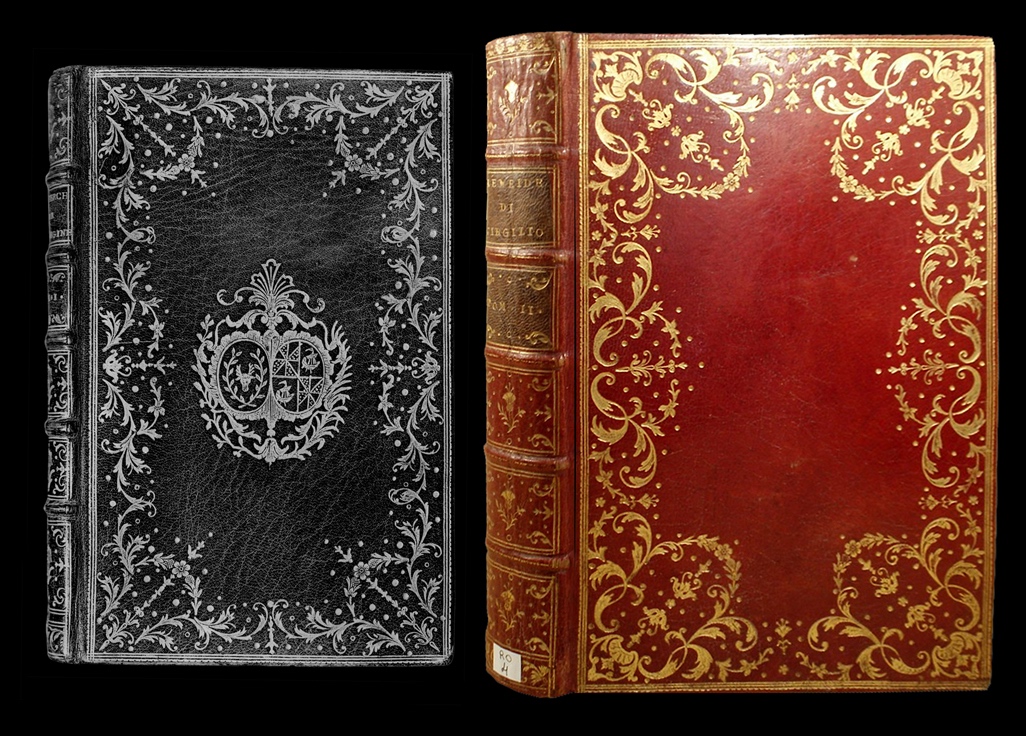
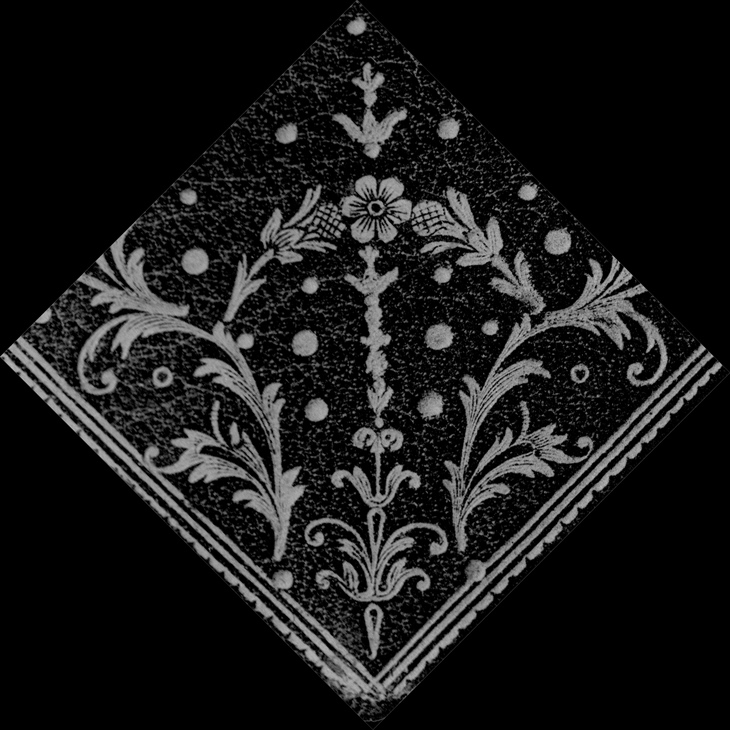
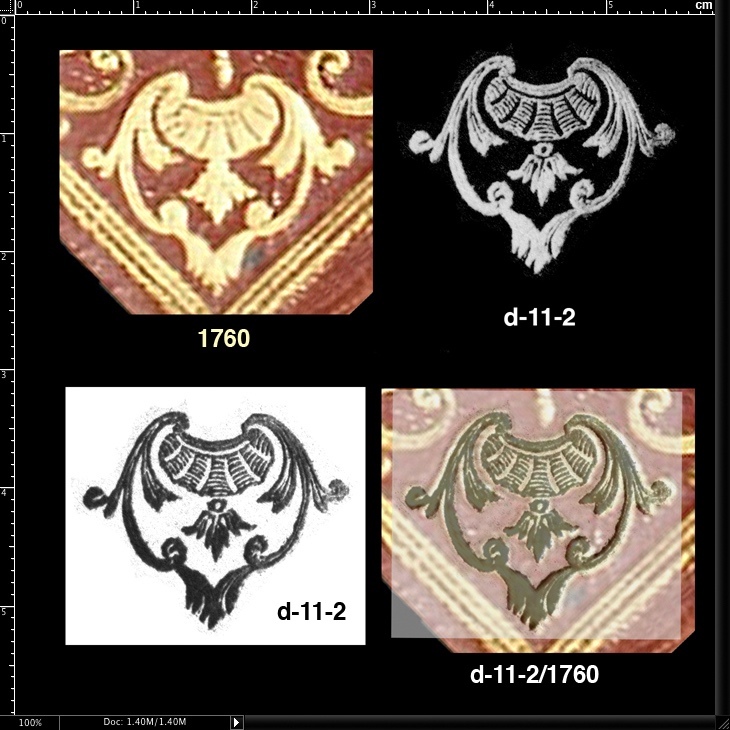
| In Comparative Diagram 3, I wanted to test the corner imprint with Douceur's imprint of the same kind d-11-2, the over lay shows that these imprints are probably from the same tool although the distorted 1760 example is a bit too wide. This further assures us that at least some of the tools used in the decoration of these bindings derive from the Douceur workshop. |
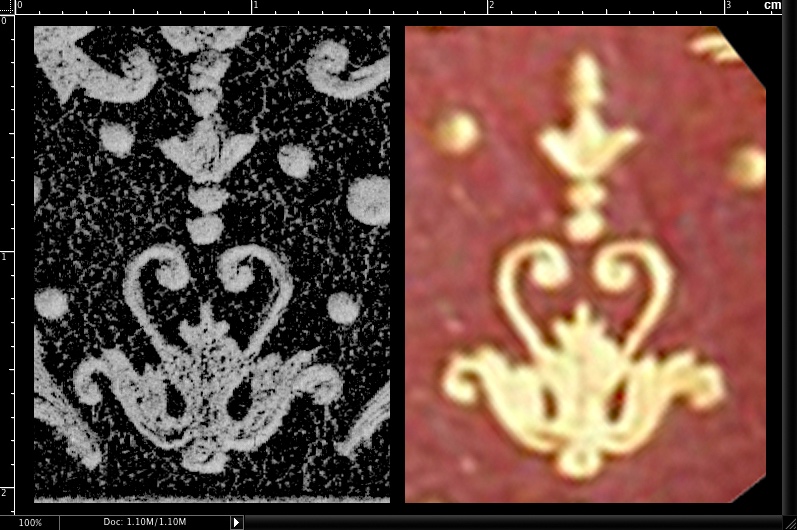
| In Comparative Diagram 4, we see that these imprints are probably from the same tool, even though the 1760 example is probably distorted and looks smaller, this is an imprint that I have not recorded before, and may be a late tool in Douceurs kit otherwise a sign of post Douceur tools. |
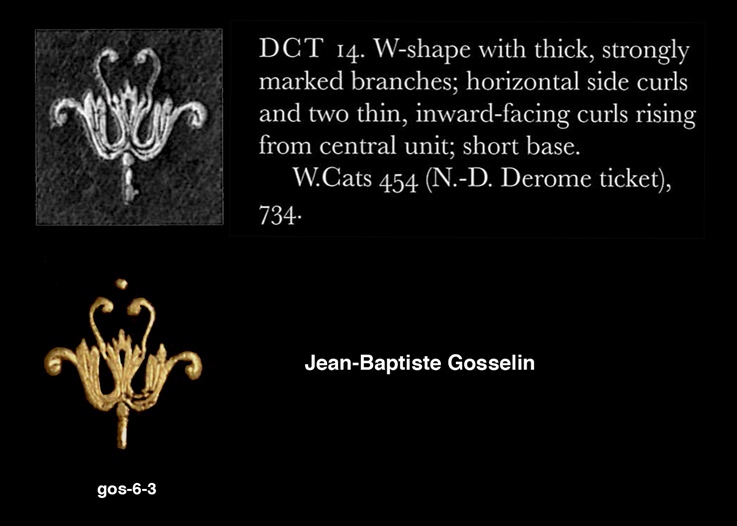
| In Comparative Diagram 5 we see the only tool that Barber recorded of this type, his model DCT 14 that he implies, through the citing of a Derome ticket, is a Derome tool. This is not a Derome tool, I don't think Derome le jeune used a tool like this. This is a Gosselin tool and appears on a signed Gosselin binding (click here to see it). W.Cat. 454 is a beautiful example of a Gosselin binding that Barber has attributed to Derome le jeune due to his ticket inside. |
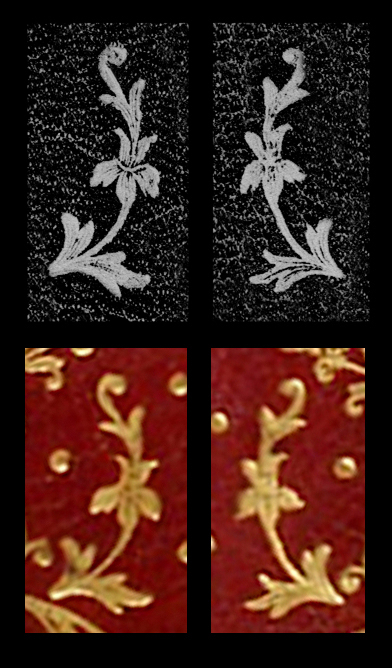
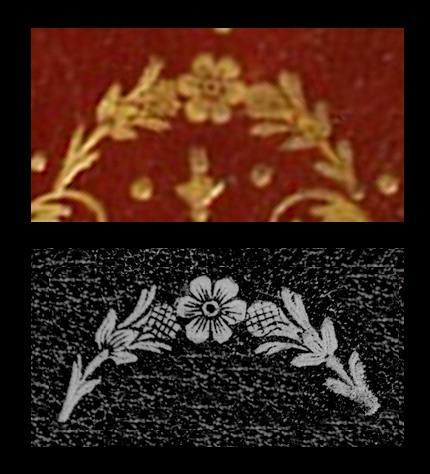
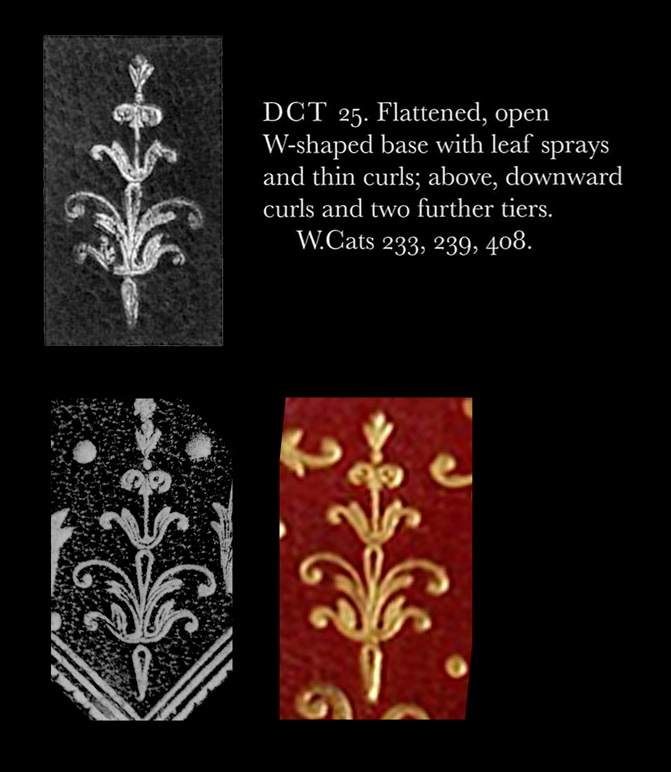
| In Comparative Diagram 6 and 7, I show imprints that are found on both bindings, yet these imprints are not in Barber's catalogue nor have I recorded them previously as Douceur imprints, thus they are not obvious Douceur imprints if even they are Douceur imprints. In Comparative Diagram 8 we see an imprint that Barber has recorded as DCT 25, he has not included this imprint with his list of Douceur tools, and it appears on the 1780 binding shown on the previous page this may be the most important link to the post Douceur binder. Barber notes a number of examples. |
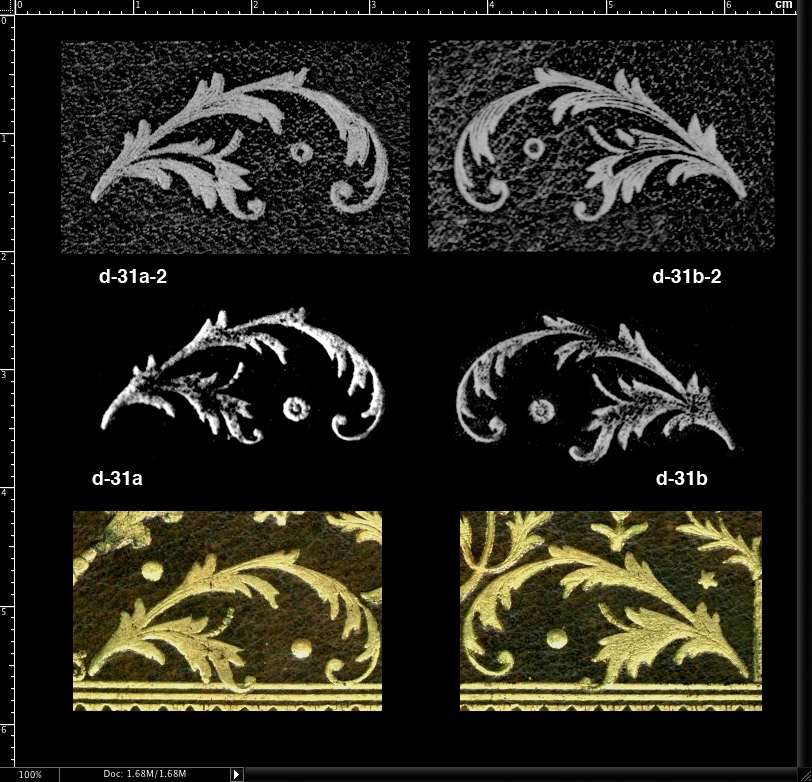
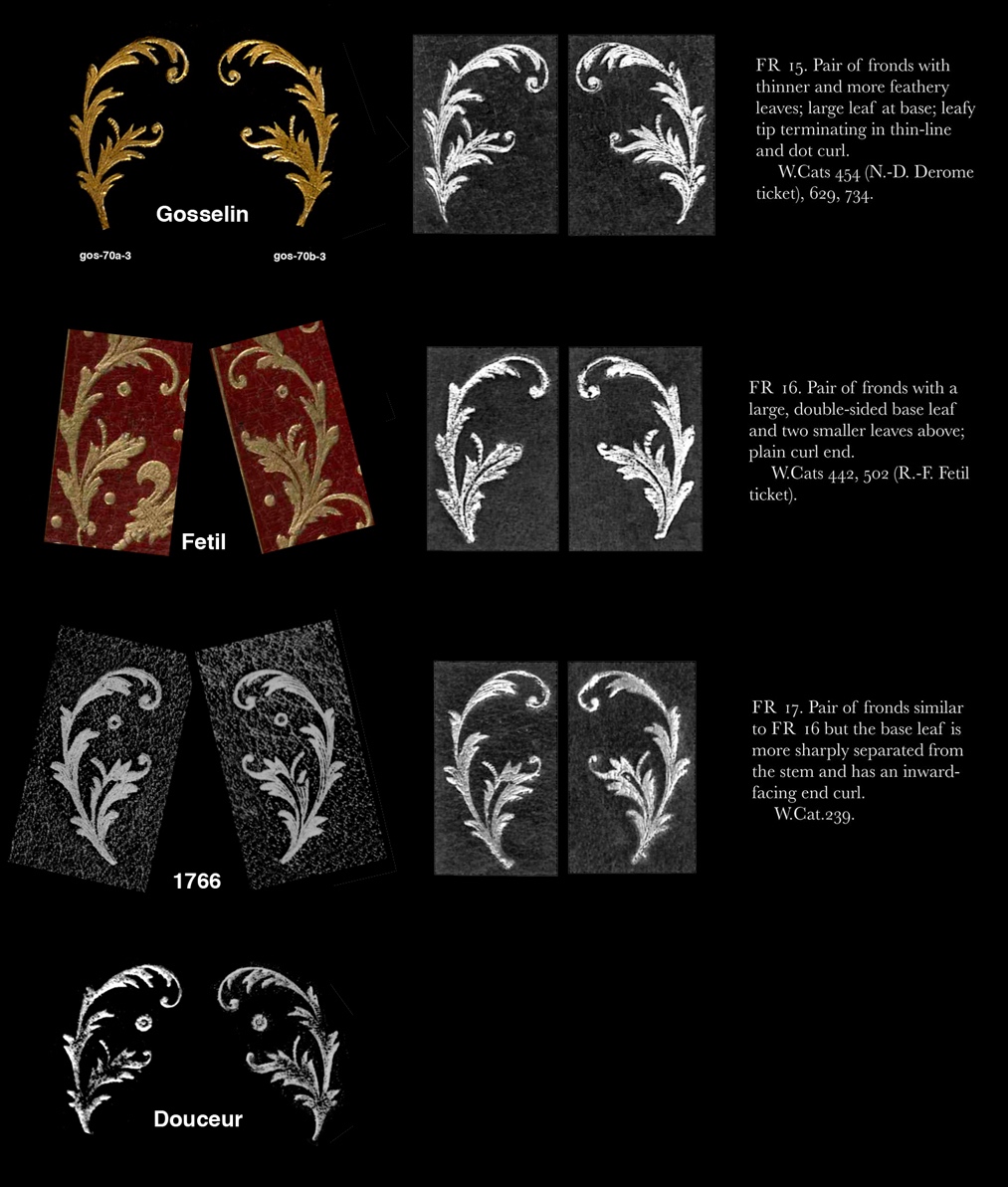
| In Comparative Diagram 10, we see that Barber has found 3 examples of this tool, the first, FR 15 is a Gosselin tool not a Derome tool as mentioned previously. The next, FR 16 is a Fetil example, while FR 17 looks to be our 1766 example and Barber notes that he found this on W.Cat 239. On Barber's page 277 he gives a complete outline of bindings and tools that he associates with Douceur, even FR 16 which is a Fetil tool he has included, however W.Cat 239 does not figure into this list nor does FR 17, thus we can only conclude that the 1766 binding and possibly the 1760 binding were not made by Douceur, who ever made these bindings had a limited access to a few of Douceurs tools, yet made bindings in the style of Douceur with tools that imitated those of Douceur. For the moment I have given these imprints Douceur catalogue numbers such as d-31-2, this is only a provisional measure. If and when we find out who made these bindings we can rename them. All cases where Barber has catalogued a tool ahead of me then I revert to his catalogue numbers such as FR 17, however as it is a pair this still needs to be more precisely defined, such as FR-17a and FR-17b, with a binder prefix code if we manage to identify him. |
|
click here to return to the HOME page. click here to see an INDEX of the 2017 pages. see below links to previous work |
| Even experts are sometimes wrong, before you spend thousands on a book, please do your own research! Just because I say a certain binding can be attributed to le Maitre isn't any kind of guarantee, don't take my word for it, go a step further and get your own proof. In these pages I have provided you with a way of doing just that. |
| Virtual Bookings, created by L. A. Miller | return to the Home page of VIRTUAL BOOKBINDINGS |